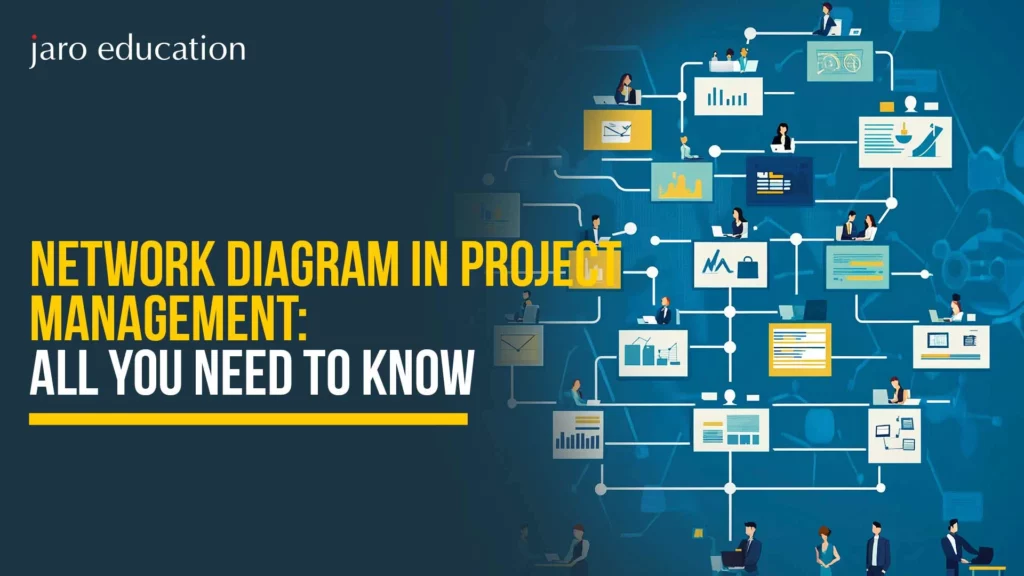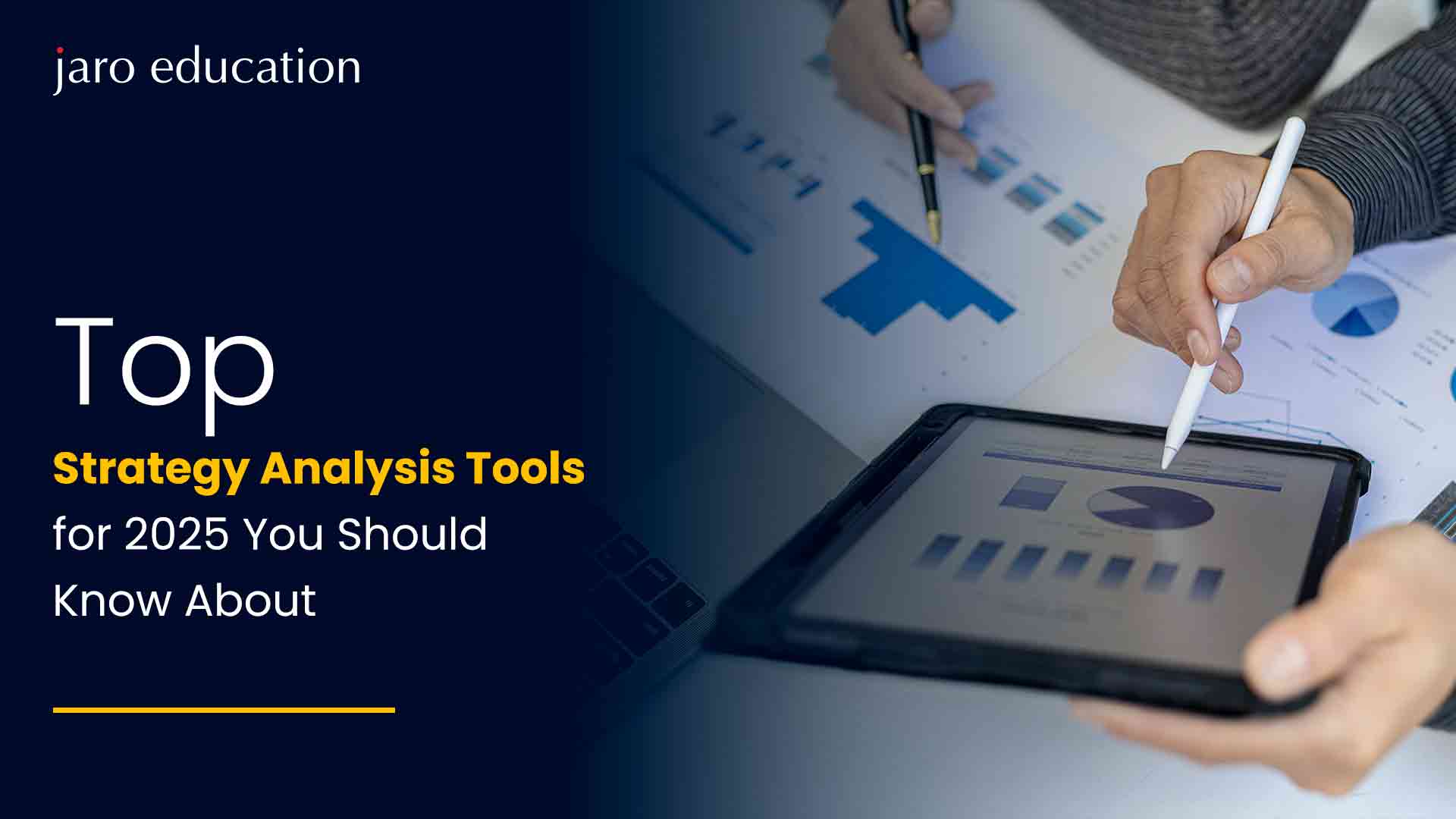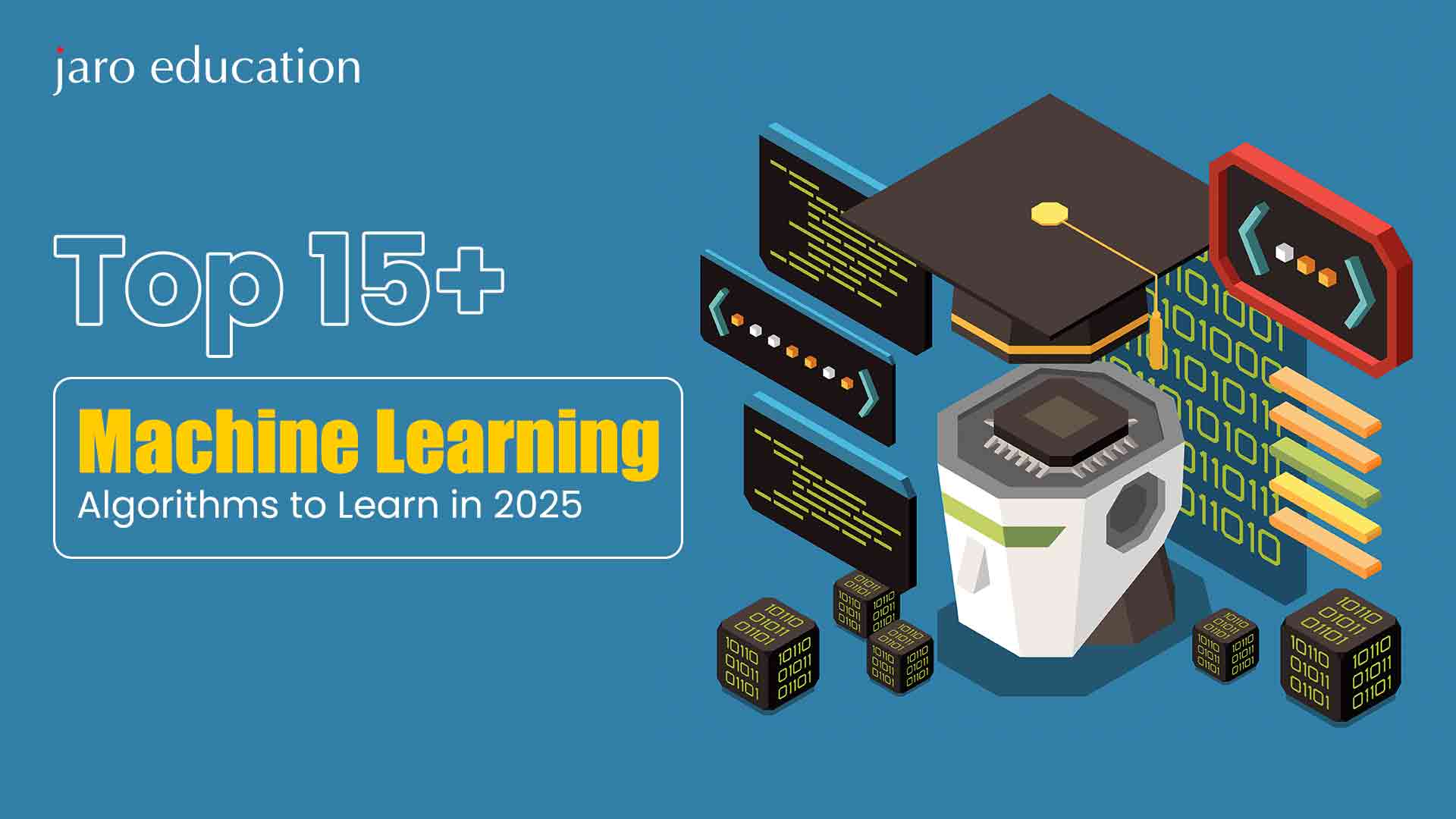An Ultimate Guide to Business Analyst Interview Questions & Answers
Table of Contents
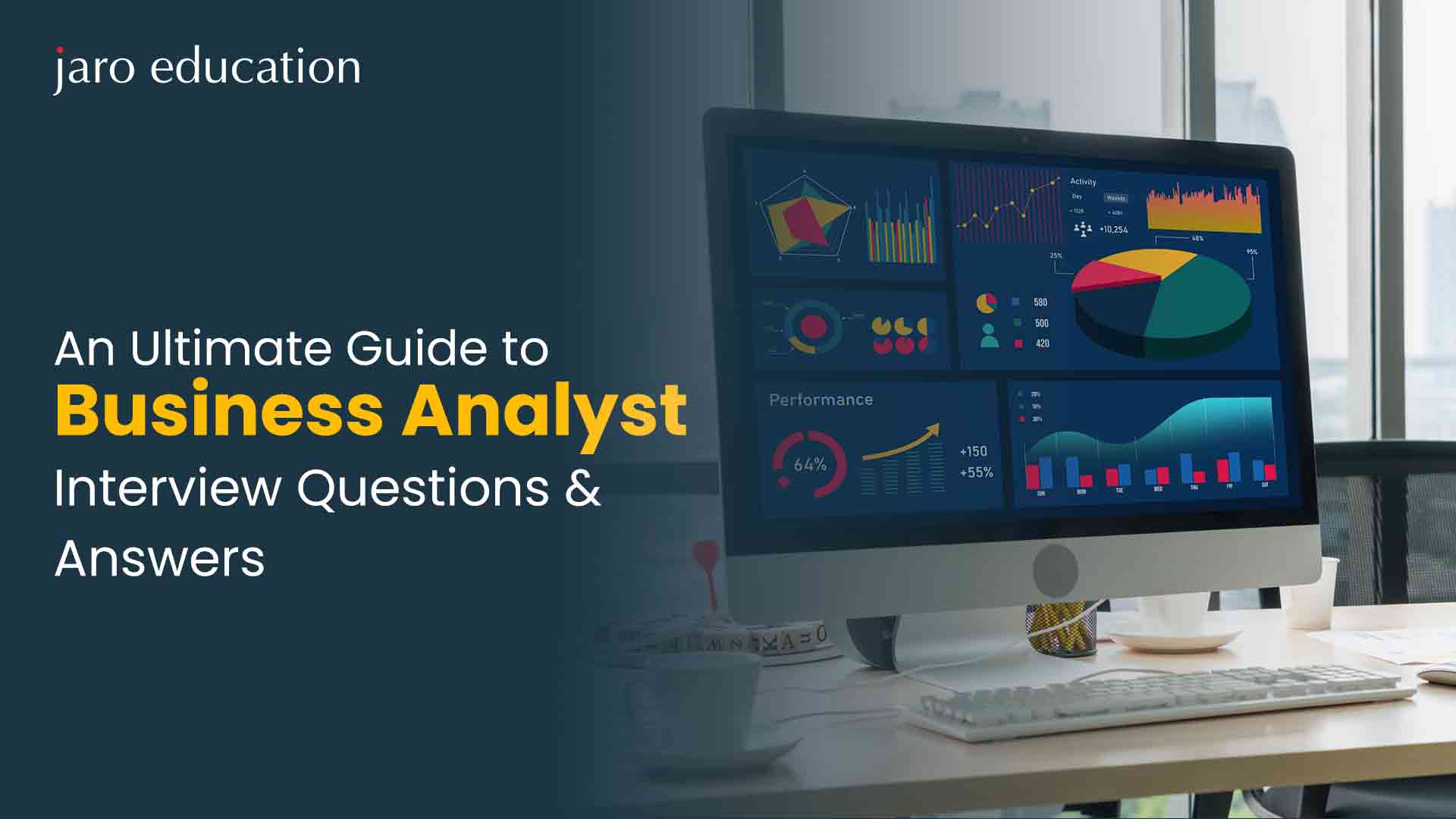
Whether you’re starting your career in a new position or you’re an experienced business analyst, it is always important for you to prepare for many interview questions for business analysts. This is because presenting yourself to a company as a qualified applicant and providing appropriate proof of your knowledge is the art of the interview.
Strange, right? Not at all! Many applicants compete for the same position you are looking for in a highly competitive market. The only way to show your capabilities and make an impression on your company is to respond to business analyst interview questions confidently.
Therefore, give yourself time to prepare for any questions you might encounter during a business analyst interview. The degree and intricacy of the interview questions for business analysts differ according to the job profile and the organisation you are applying for. Therefore, in addition to the general business analyst interview questions and answers, it is beneficial to focus on specific areas, such as senior, Junior, and entry-level interview questions for business analysts.
To help you prepare for your next business analyst interview, we’ve compiled a list of the top interview questions and responses in this blog.
General Interview Questions For Business Analysts
Here are some of the most common interview questions asked of business analysts:
1. What are some examples of the papers that a business analyst works with?
Answer: The given below documents are some of the typical ones that a business analyst works with:
- A document outlining the project’s vision
- Use cases
- Plan for Requirement Management
- User narratives
- Matrix of Requirement Traceability (RTM)
- System Requirement Specification (SRS)/System Requirement Document (SRD) Business Requirement Document(BRD)
- Case study
- Functional Specification Document (FSD) or Functional Requirement Specification (FRS)
2. As a business analyst, how would you define a good quality requirement?
Answer: A good quality requirement, in the context of business analyst job interview questions, should adhere to the SMART principle:
- Precise: The criteria must be clear and quickly documented.
- Measurable: The requirement’s success criteria can be measured using a variety of factors.
- Achievable: The need must be realistic given the available resources.
- Relevant: The requirement needs to align with the business case for the project.
- On-time: Communication of the demand should begin early in the project’s lifespan.
3. What is a flowchart and its significance?
Answer: A flowchart consists of symbols and diagrams that help to picture the entire system’s flow. It is an important part of the business plan that helps developers and non-technical stakeholders understand the overall process easily.
The diagram is given below for better understanding.
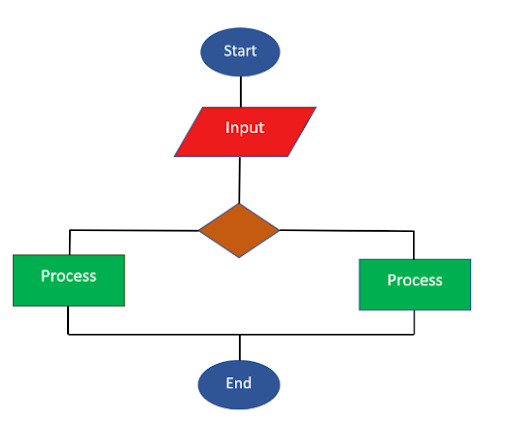
You can answer these interview questions for business analysts by showing other examples.
4. Why does a company require a business analyst?
This is one of the most common interview questions for business analysts. You can sneer in the following way:
Businesses require business analysts for the reasons listed below:
- Understanding the organisation’s fundamental dynamics and structure before implementing a system.
- To recognise areas for improvement and comprehend the target organisation’s present issues.
- To guarantee that the end-user developers and customers have a common and clear understanding of the target organisation.
5. How do you manage your priorities when working on several projects?
Answer: To answer this interview question for business analysts, you should reply, “I rank as a business analyst according to the aims and objectives of the project. When I come across competing priorities, I first decide how each task will affect the project as a whole and then work with stakeholders to create a workable solution that guarantees the achievement of all crucial goals.
6. What is SRS, and what are the key components of it?
Answer: A document or collection of documents that outline the characteristics of a system or software programme is called a System Requirements Specification (SRS) or Software Requirements Specification. It consists of a number of components that specify the desired functionality needed by the client and stakeholders to satisfy end users.
An SRS provides a high-level understanding of the system and its behaviour, the primary business processes it supports, its assumptions, and its primary performance metrics. An SRS’s essential components are:
- Work Scope
- Requirements for Function
- Non-functional specifications
- Dependencies
- Data Model Premises
- constraints
- Acceptance Criteria
7. What is the requirement?
An answer to this interview question for a business analyst is as follows:
To accomplish particular corporate goals or objectives, a requirement is a focused solution. It is a component of several SDLC stages. Before being implemented, this project’s foundation requirement is to be approved by the business users and stakeholders. In addition, each criterion must be accurately recorded for future reference.
8. What is a use case?
To answer this BA interview question you can say that a use case is a diagrammatic representation of a system that explains how a user utilises it to achieve a certain objective. It is an important component of software engineering and software modelling techniques that specify the desired features and address any potential issues that a user might run into.
9. Name a few of the abilities and resources that business analysts have.
-
- Knowledge of databases,
- ERP systems, SQL,
- Google Docs,
- Microsoft Office Suite, and more.
-
- Business process management,
- Requirement elicitation,
- Documentation, and other
10. What is the difference between BRD, SRS and FRS?
Answer: Software development uses a variety of requirement documents, including business requirements documents (BRDs), software requirements specifications (SRSs), and functional requirements specifications (FRSs). They are differentiated on the basis of the scope they cover.
- BRD: A high-level document that lists the project’s goals, objectives, and business needs.
- SRS: A comprehensive document outlining a software project’s functional and non-functional requirements.
- FRS: A document that provides a detailed description of the particular attributes and capabilities of a software system.
11. In your opinion, is agile the most effective method for executing software projects?
Answer: Not always or in all circumstances, but not in absolute terms. Agile approaches are more suited for projects in the present day because they let you adjust to changing needs and shifting company dynamics. It was made to be able to adapt to such rapid changes. It is not, however, a simple item to obtain, nor is it an easy strategy to put into practice. In some situations, a hybrid approach—which combines waterfall and agile methodologies—is far more appropriate for a project. It works well for projects with largely standard criteria.
12. Are you familiar with Sprint Zero? What is it?
Answer: Sprint Zero is typically conducted at the beginning of a team’s existence, prior to the official project kickoff. The goal of this sprint is for the development team to collaborate and quickly create a functional product, establish a project skeleton, and develop a minimal number of User Stories along with story mapping. While maintaining a high level of competition, this sprint should be as light as possible. The focus is on starting the project exploration process, determining the desired path, and keeping velocity as low as necessary during this initial phase.
13. What is Gap Analysis?
Gap analysis is a method used to examine the differences between the intended system and the current system’s functions. Here, “gap” refers to the amount of work or modification that could be necessary to achieve the desired outcome. It compares the performance levels of the suggested and current functionality.
14. What is the Requirement prioritisation? What are the many methods for doing it?
The process of allocating requirements according to business urgency to various phases, schedules, costs, etc. is known as requirements prioritisation.
How can the effectiveness of reviews be measured?
Let’s understand this one of the most important interview questions for business analysts in a brief.
Throughout the project’s lifecycle, reviews are carried out. Both code and papers are reviewed by project teams. The team can lower the cost and labour of rework by monitoring and measuring this parameter.
The quantity of flaws discovered in the project is used to gauge how effective evaluations are. Effective evaluations lower the number of project flaws that require revision.
It can be calculated by the following formula:
Requirements Review Efficiency (RRE) = Total number of review defects in requirements document / (Total number of review defects in requirements document + Total number of testing defects having source as requirements phase) x 100
Let’s take an example:
A business analyst finds ten review defects while reviewing the requirements document. During unit/integration/system testing, the team found 200 defects. Thirty of these defects were identified during the requirements elicitation phase. So in this case,
RRE = (10/(10+30) * 100 = 25%
This means that 25% of the defects were reduced and no re-work was required to fix them.
The formula for calculating review efficiency for the entire project is:
Review Efficiency (RE) = Total number of review defects / (Total number of review defects + Total number of testing defects) x 100
RRE is one of the quantitative performance measures used by business analysts.
15. What are the different skills that a business analyst must have?
Answer: The major business skills are categorised into three parts. They are Fundamental skills, Technical skills, and Business analysis skills.

*geeksforgeeks.org
So, in the given table, for each category business analyst should possess the following skills:
| Category | Skills |
|---|---|
| Fundamental Skills | Problem-solving Managerial skills Interpersonal skills |
| Technical Skills | Programming Languages MS Office Database Domain Knowledge |
| Business Analysis Skills | Analytical skills Creativity Decision-making |
16. What is the initial step of a project creation?
The answer to this business analyst questions for an interview can be done in the following way:
The initial step of the project creation is:
- Market Analysis
- SWOT evaluation
- Analysis of competitors
- Determining the strategic vision
17. Are you aware of the different techniques like MoSCoW and SWOT?
A business analyst should understand how strategies are developed and put into action to determine the needs of an organisation and get the greatest outcomes.
The recruiter uses such type of interview questions for business analysts to see your familiarity with these terminology and your ability to apply them to your working policies.
So, the answer is that MoSCoW stands for Must or Should, Could or Would. To prioritise the framework requirements, a business analyst should apply this procedure by weighing each demand against other demands.
SWOT is the most popular method in businesses for allocating resources effectively. It stands for Strengths, Weaknesses, Opportunities, and Threats. Any organisational framework’s advantages and disadvantages should be able to be recognised by a business analyst, who can then convert them into opportunities and threats.
18. How is the project completion percentage performance measure determined?
To respond to this interview questions for business analysts, consider the following scenario:
An estimated 110 calendar days and 24 person-months of work are needed to complete a software project. As of a checkpoint, the project had used 70 calendar days and 16 person-months. What proportion of the project has been finished?
Note: Adding a business analysis context to this question is simple. Therefore, don’t think of it as a project management query.
To properly answer this question, some thought must be put into it. Let’s examine the given information.
24 PM is the total estimated effort (person-months).
To comprehend this, let’s look at two scenarios
Situation I
Total estimated effort 24 PM (person-months).
Effort expended at the checkpoint is 16 PM
10 PM is the amount of work left to do. (This could occur for several causes, such as the departure of resources or difficult duties.)
The completion status of 16 / (16+10) is 61.5%
The overall effort will be 16 + 10 = 26 PM since the remaining work will take 10 person months.
Scenario II
Total estimated effort = 24 PM (person-months)
Effort spent at checkpoint = 16 PM
The remaining effort to complete = 6 PM (Not so frequent case but can happen)
So, the completion status = 16 / (16+6) = 71.7%
In this case, the total effort has been reduced.
Technical Business Analyst Interview Questions
A technical business analyst specialises in providing analysis that may be applied to enhance business processes through the use of hardware and software. So, here are some of the popular interview questions for business analysts:
1. Could you explain your proficiency in SQL?
Answer: SQL is essential to a technical business analyst’s ability to carry out any task. Practical abilities like data manipulation, navigation, and query writing will be sought for by the HR staff. You can impress the interviewer with technical words if they are on a technical team. As a result, they will be better able to comprehend the range of your abilities.
2. Could you explain the different kinds of SQL statements?
This is an additional technical interview question for a business analyst that assesses your level of education. You will most likely encounter this in an interview with a manager from the business analytics team. Don’t be scared to share your extensive SQL knowledge. Extend the categories, specifically:
- Definition of SQL
- SQL manipulation
- SQL management
3. How do you feel about functional and technical documents?
Every BA should be able to describe the solutions offered by different systems. As a technical analyst, you will need to explain the system’s operation. Inform the interviewer that you are capable of creating documents like the scope statement and stakeholder analysis.
4. How do you convey complex, technical information to non-technical stakeholders?
Answer: The way you answer these interview questions for business analysts will showcase your communication skills. Show that you can be relatable, able to create simple mockups, and answer questions in an understandable manner.
5. What are the components of UML?
There is no set answer to this BA interview question, as concepts can be derived from many sources. Be sure to mention the components for UML:
- Structure – actor, attribute, interface, object, etc
- Behaviour – event, message, operation, state, etc
- Relationships – association, composition, inheritance, etc
6. What is PaaS?
Answer: PaaS is a platform for cloud computing that enables programmers to create programs online. Users can use their web browsers to access the services.
7. What is SaaS?
Answer: SaaS stands for Software as a Service which allows users to connect and use cloud-based apps over the internet. The most common examples of SaaS are email, Microsoft Office 365, and Calendaring.
9. What is CaaS?
Answer: A cloud-based system called Container as a Service is a pay-as-you-go cloud-based service providing companies with a new way to manage their virtualized applications and clusters to make deployment easier and quicker.
10. Describe UML and its applications.
A general-purpose, developmental modelling language that offers a standardised method of system visualisation is called UML, or Unified Modelling Language. It is used to rationalise system behaviour in order to identify and remove faults or bottlenecks.
11. How is a requirement considered good or perfect?
If a need is SMART—specific, measurable, achievable, relevant, and timely—it is considered ideal. A condition should be described in detail, and every metric necessary for success should be quantifiable. Every resource required should be available and pertinent to the project. Every condition or component should be disclosed on time.
12. What is the Requirement Traceability Matrix used for?
It keeps track of every request made by a customer and guarantees that all requirements are satisfied.
Role-Specific Business Analyst Interview Questions
Hiring managers often ask these interview questions for business analysts to evaluate your knowledge and approach in various scenarios:
1. What is your typical approach for a project?
-
- Clarify Your Role: Understand your responsibilities and the stakeholders’ perspectives.
- Define Objectives: Establish primary goals while managing conflicting expectations among stakeholders.
- Create a Work Plan: List the steps, timelines, and deliverables.
- Define Requirements: Articulate clear and actionable requirements.
- Ensure Technical Implementation: Collaborate with IT teams to support the solution.
- Documentation and Training: Document the process and train end-users for implementation.
- Assess Project Value: Evaluate the project’s success and identify any follow-up actions needed.
2. What documents does a business analyst need? Which ones have you prepared in the past?
The project life cycle involves many documents, depending on how a business analyst is utilised. Key documents may include:
- Initiation Document
- System Requirements Specification
- Business Requirements Document
- Functional Requirements Document
- Requirements Traceability Matrix
- Use Case Specifications
- Change Request Document
- Gap Analysis Document
3. What is requirement elicitation? Have you participated in these meetings?
Requirement elicitation is a technique for gathering information from stakeholders and users, involving strategies for direct collaboration. Common elicitation techniques include:
- Document Analysis
- Interviews
- Prototyping
- Brainstorming
- Workshops and Observations
- Surveys/Questionnaires
4. What types of diagrams do you use as a business analyst? How do they impact your work?
There are several common diagram models used by business analysts, including:
- Flowcharts: Visual representations of the entire system flow, making it easy for stakeholders to understand operations.
- Activity Diagrams: Illustrate various activities and their flow across departments.
- Use Case Diagrams: Model the functionality of a system through actions and services that the system needs to perform.
- Sequence Diagrams: Show interactions between different objects and the order of message flows.
- Collaboration Diagrams: Also known as interaction diagrams, they show relationships and interactions among software objects.
5. What is OLTP?
OLTP stands for Online Transaction Processing. It is used to refer to the data processing on a computer network. The system is generally designed to complete the database transaction in the shortest period of time. The primary functions of such systems are database retrieval and data entry.
Intermediate Business Analyst Interview Questions
1. Can you walk me through your experience in developing business requirements?
For this interview questions for business analysts, you can explain your past experience where you made a great impact in creating business requirements. You can answer in the following way:
I have extensive knowledge and experience in analysing business requirements. In my previous company, I was responsible for conducting stakeholder interviews and workshops to understand business needs. Then, I converted those needs into detailed requirements by using tools like user Stories, flow charts, and case diagrams.
2. What are the different software tools that you have worked on as a business analyst?
To showcase your familiarity with different tools, your answer to this interview questions for business analysts may include a project management tool such as Jira, a data analysis tool like EXCEl or SQL, and a processing model tool like Vision.
3. How do you manage scope creep in a project?
You can answer these interview questions for business analysts in the following manner
To avoid scope creep, I make sure to document and validate all project requirements with stakeholders. In case, when there are any changes or additions, I check the project’s timeline and budget and accordingly communicate it to relevant stakeholders for approval.
4. How do you ensure that a solution aligns with business goals?
I collaborate completely with stakeholders as a senior business analyst to comprehend their strategic goals and needs. After that, I examine and chart existing procedures to find any weaknesses or potential areas for development. Lastly, I suggest and confirm solutions with stakeholders to make sure they support the aims and objectives of the business.
5. Can you give an example of a successful project you managed as a business analyst?
This interview question for business analysts seeks to determine if you are well-suited for a senior role in the company. You should share relevant projects you have led and your management style.
In my last role, I was responsible for leading the implementation of a new CRM system. This included identifying business needs, managing organisational change, and training end-users. We successfully completed the project on time and within budget, which led to increased customer satisfaction and better efficiency in sales operations. It was deemed a successful project by both stakeholders and customers.
Tips for Preparing for the Business Analyst Interview
Now that you know what kinds of interview questions might be asked, here are some tools and advice to help you with business analyst interview preparation:
- Before sitting in an interview, learn about the company’s history, goals, and core principles, as well as any recent developments.
- Go through the job description to find out what the interviewer is looking for. Also, pay attention to the job description, including requirements, qualifications, and abilities.
- Practice the most commonly asked questions in interviews. You can use examples, but make sure to keep them short.
- Stay up to date on the latest tools and technology that are mostly in demand in the business analyst’s job sectors.
- As it is said, “first impression is the last impression” So to make your first impression, dress professionally and be punctual for the interviews.
- Be confident and stay calm. During an interview, try to maintain eye contact and highlight your strengths and experience in a manner that shows you’re the only candidate suitable for the role.
- Ask the interviewer about the company, responsibilities, or tea. This shows your interest in the role.
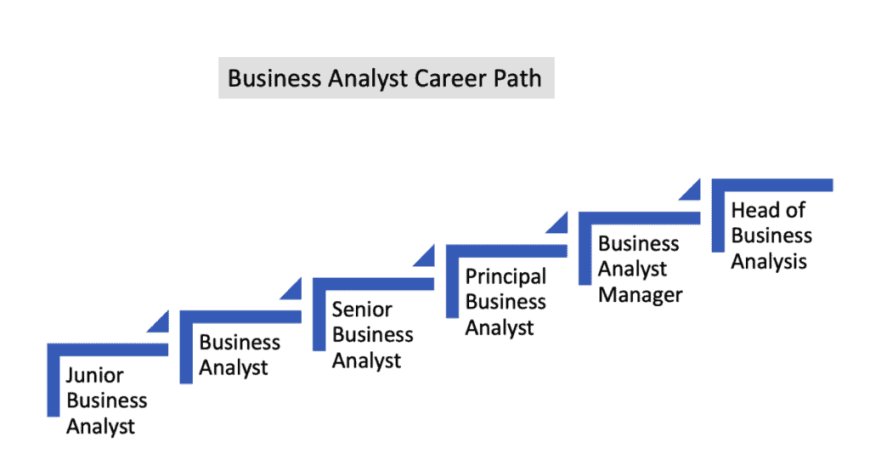
*iabac.org
In addition, if you are looking for a flexible way to learn about Business Analytics, pursue the ePost Graduate Diploma in Advanced Business Analytics (ePGD-ABA) from IIM Ahmedabad, which is designed to help professionals turn data into useful insights for making effective business decisions. This 16-month programme combines online classes with on-campus sessions, giving you a strong foundation in asking the right questions, analysing the right data, and making important decisions.
As the need for skilled analytics professionals grows, this programme provides you with advanced tools, techniques, and specific applications in areas like marketing, HR, finance, operations, strategy, and public policy.
How Can Jaro Education Help You?
Jaro Education is one of the most trusted online higher education companies, with more than 15 years of experience. The company provides various online programmes in collaboration with top reputed institutes. We are a team of professional experts who are always ready to offer career counselling and academic support to learners. By enrolling in an ePost Graduate Diploma in Advanced Business Analytics (ePGD-ABA) from IIM Ahmedabad in partnership with Jaro Education, you can take advantage of the following:
- Unparalleled student career support
- Best learning experience
- Opportunities to connect with experienced and professional alumni
- Be a part of discussions and forums for enhanced learning
The Bottom Line
Now, you must have understood that for any organisation, business analysis is crucial. You can prepare for the next interview using the above-mentioned interview questions for business analysts. Remember, by making sure that you have a healthy amount of confidence, you will definitely be successful in leveling up your career. So, why wait? To enter the field of business analytics and hone your skills, enrol in the ePost Graduate Diploma in Advanced Business Analytics (ePGD-ABA) from IIM Ahmedabad.
Frequently Asked Questions
To prepare for an interview, make sure to research the company, brush up your technical skills, and practice the most common interview questions for business analysts. In addition, when you answer your question make sure you backup your answers with examples.
The top three skills for a business analyst are advanced analytical lead, development of improved information technology, and knowledge of ERP and CRM Systems.
A business analyst interview question is a process of evaluating a candidate’s comprehension of business analysis principles, data collection and analysis skills, stakeholder communication abilities, and potential solutions to business problems. It frequently focuses on the candidate’s background in requirements gathering, process modelling, and data analysis techniques.
The STAR method is a structured way of responding to a behavioural-based interview question for business analysts. It is done by discussing the specific task, situation, and result.
The six knowledge areas of business analysis are:
- Business analysis planning and monitoring
- Strategy analysis
- Requirements analysis and design definition
- Solution evaluation
- Elicitation and collaboration
- Requirements life cycle management






